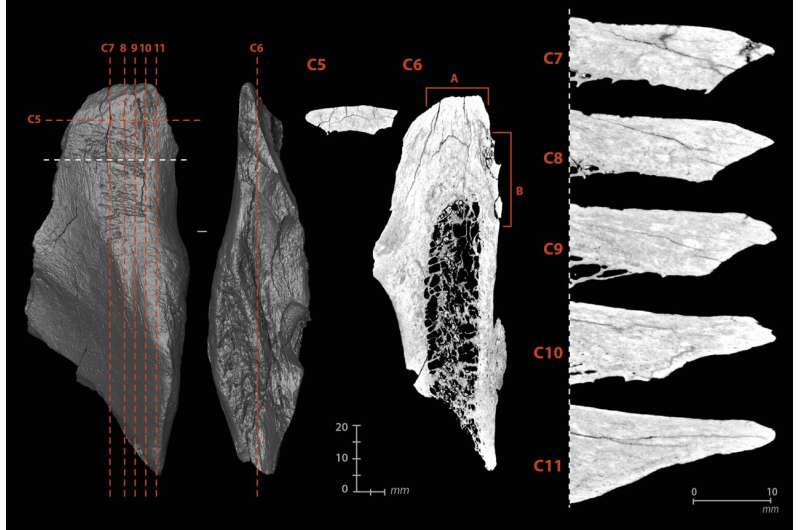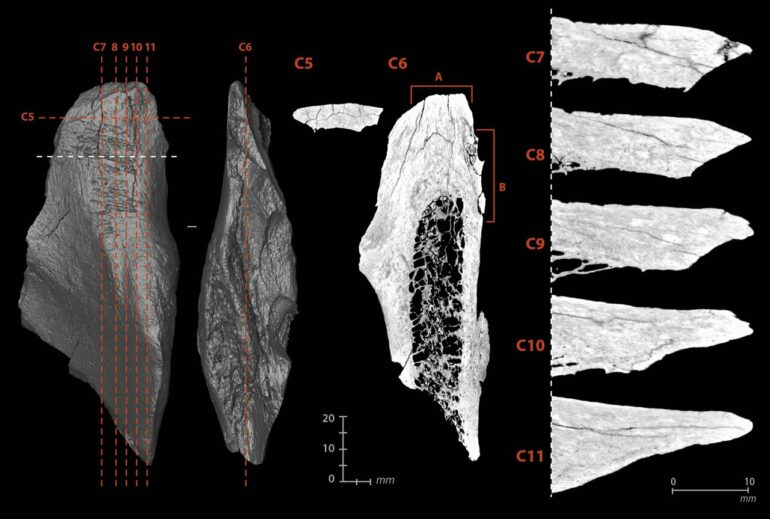Were anatomically modern humans the only ones who knew how to turn bone into tools? A discovery by an international team at the Chez-Pinaud-Jonzac Neanderthal site settles the question. Published in PLOS ONE, it sheds light on a little known aspect of Neanderthal technology.
From 45,000 years ago onwards, anatomically modern humans were present in Western Europe, eventually replacing the last Neanderthal populations. This moment also sees important changes in material cultures, particularly the large variety of bone objects, including hunting weapons, ornaments and fully-shaped figurines introduced by modern human groups.
Their absence from Neanderthal sites has led to the assumption that these groups did not produce bone tools and implements, sometimes inferred to reflect cognitive difference between the two populations. Since the Neanderthals did not know how to process this raw material, they were limited to picking up bone fragments among butchery remains, using them uniquely as retouchers for shaping flint tools.
New excavations at the Neanderthal site of Chez-Pinaud-Jonzac (Charente-Maritime), carried out by an international team since 2019, have made it possible to reconsider this assumption.

Micro-tomographic views of the internal damage of the multi-functional tool. © M.Baumann – TraceoLab-ULiège & Nicolas Vanderesse – CNRS
Current studies have shown that bone tools are as numerous as flint ones. Moreover, their diversity provides evidence for a genuine industry that consists not only of retouchers but also of cutting tools, scrapers, chisels and smoothers, used for various activities and on multiple materials. These bone tools are identifiable based on traces of manufacture and use present on their surfaces as well as within the tools themselves using X-ray microtomography. Unlike examples made by modern humans that are generally shaped by scraping and abrasion, these tools were primarily made by percussion.
The discovery of a bone industry at Chez-Pinaud-Jonzac is consistent with evidence uncovered a few years earlier by the same team at the Neanderthal site of Chagyrskaya, in the Siberian Altai. These two sites, located on either side of the Neanderthal range, testify to the fact that, like modern humans, Neanderthals made and used bone tools for their daily needs. They had the know-how to process bone using their own techniques and for their own purposes. Bone tools represent a new means for exploring and understanding Neanderthal technology.
More information:
Malvina Baumann et al, On the Quina side: A Neanderthal bone industry at Chez-Pinaud site, France, PLOS ONE (2023). DOI: 10.1371/journal.pone.0284081
Provided by
University de Liege
Citation:
An unseen industry: When Neanderthals turned bone into tools (2023, June 19)



